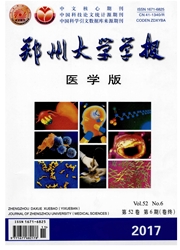

 中文摘要:
中文摘要:
目的:对新疆哈萨克族进行群体遗传学数据调查,并将其结果用于40个中国人群间的遗传距离和遗传关系分析。方法:检测新疆哈萨克族人群血样中15个常染色体STR位点;收集公开发表的中国多省份、多民族、多人群相应的15个常染色体STR频率数据,以Phylip 3.69及Arlequin 3.5统计软件包计算40个族群之间的Nei’s遗传距离(Rst值),并以Neighbor-Joining法构建40个族群之间的系统发生树。结果:在新疆哈萨克族中,除TPOX以外,其他14个STR的He、PIC均在0.7以上。全部40个人群之间的Rst均值为0.055 1,其中18个汉族人群之间的Rst均值为0.044 9,22个少数民族间的Rst均值为0.057 6。从系统发生树中发现汉族分支多且愈来愈多样化,我国境内一些距离稍远的少数民族之间有一定的聚合。结论:法医学常用的15个常染色体STR在新疆哈萨克族中具有高度遗传多态性。
 英文摘要:
英文摘要:
Aim: To investigate the population genetic data of Xinjiang Kazaks and to analyze the genetic distance and genetic relationship among 40 Chinese populations including Kazaks. Methods: The 15 autosomal STR loci in Xinjiang Kazaks samples were analyzed; corresponding frequency data of 15 STR loci of other Chinese populations was collected from published literatures. The genetic distance( Rst) among the 40 populations was calculated by Phylip 3. 69 and Arlequin3. 5,and the phylogenetic tree was constructed with Neighbor-Joining method. Results: All the other 14 STRs except TPOX had high He and PIC values more than 0. 7 in Xinjiang Kazaks. The mean Rst among the 40 populations was0. 055 1,the mean Rst was 0. 044 9 among the 18 Han populations,and the mean Rst was 0. 057 6 among the other 22 minorities. In the tree graph,the Han nationality displayed a lot of branches,showing a trend of more and more diversity;some of the minorities gathered together although they were geographically distant. Conclusion: The 15 autosomal STR are highly polymorphic in Xinjiang Kazaks and the 15 STR frequency data published by the forensic science community can be conveniently used for the study of human evolution,ethnic origin and ethnic group relationships.
 同期刊论文项目
同期刊论文项目
 同项目期刊论文
同项目期刊论文
 期刊信息
期刊信息
